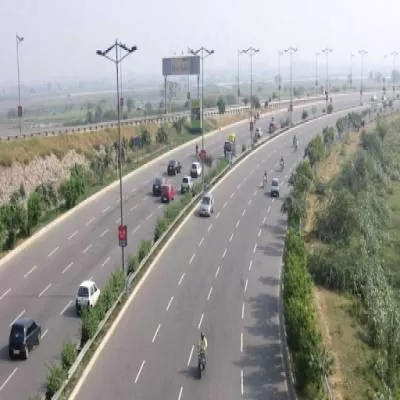- Home
- Infrastructure Transport
- ROADS & HIGHWAYS
- The whole concept of digital cities has been steadily gaining traction, believe Santanu Das, Senior and Phil Christensen, Bentley Systems

The whole concept of digital cities has been steadily gaining traction, believe Santanu Das, Senior and Phil Christensen, Bentley Systems
<p>While <span style="font-weight: bold;">Santanu Das, Senior Vice President, Design and Simulation, Bentley Systems,</span> manages global sales, marketing, development and services of the company's building, plant, electrical, civil, and reality modelling applications, <span style="font-weight: bold;">Phil Christensen, Senior Vice President, Reality Modelling and Cloud Services, Bentley Systems,</span> is responsible for the company's portfolio of reality modelling software and cloud services. They share more on the company's presence in India in conversation with <span style="font-weight: bold;">SHRIYAL SETHUMADHAVAN.</span> </p> <p> <span style="font-weight: bold;">How are Bentley's offerings contributing to the government's Smart Cities and Digital India missions?<br /> Santanu Das:</span> In the past three to four years, China has been developing what Bentley refers to as digital cities, investing an estimated $80-85 billion. One massive project where reclaimed land was developed is near Shenzhen. When an organisation is tasked with building a digital city, it must consider multiple disciplines that are responsible for different phases of the project. Bentley's Connected Data Environment, based on ProjectWise, has revolutionised megaprojects across China and India, such as the Nagpur and Hyderabad Metros, the Delhi-Mumbai Corridor, and the Mumbai-Ahmedabad high-speed rail track.</p> <p> <span style="font-weight: bold;">Speaking of software, design, and simulation, are we seeing city and government officials accepting the use of technology?<br /> Santanu Das: </span> The whole concept of digital cities has been steadily gaining traction. Yet, it is a work in progress in terms of what the actual implementation of digital cities will look like. </p> <p>At this stage, it can be basic, such as sensors to turn lights on and off around a city or monitor traffic flows. Having a digital twin of the city that links with distributed information technology around it - coupled with processing algorithms to interpret information and provide guidance - is potentially a game-changing set of technologies. It is at the awareness stage; while people are aware of digital cities, there is still uncertainty about how to implement them. To be fair, it's a tough job because no one owns a city. </p> <p>The city authority lays down rules but then there is an owner for the electric network and one for the water network. The road network is a hybrid of private and public entities, while the railways might be a public-private partnership (PPP). Digital cities require innovative technology that is open to groups of organisations and companies, which is one of the greatest advantages that a connected data environment offers.</p> <p> <span style="font-weight: bold;">How crucial is R&D for allowing Bentley to cater to the Indian market?<br /> Phil Christensen:</span> I have been involved in engineering software for a long time and there is so much disruptive technology change. If we are not ahead of the game in terms of successful integration and adopting these technologies into our offerings, we will be doing our customers a disservice. R&D is important for us; we have spent a billion dollars on R&D and acquisitions in the past five years. There are only a few places in the world where we decide to have a more regional autonomous team and, at the moment, it is in China and India. Presently, we have 560 colleagues in India. My cloud-computing and structural teams are in Kolkata and we have a strong development team in Pune. This presence helps us execute R&D locally. </p> <p> <span style="font-weight: bold;">When it comes to working with owners, how easy is it to source data to ensure a simpler decision-making and procurement process?<br /> Santanu Das:</span> Nagpur Metro participated in a joint BIM Academy with us and, with the knowledge it gained, the organisation helped other metro agencies in India integrate our technology. We are a trusted partner, so the project teams allow us to help them set up their workflow. While data sharing in the metro sector is relatively simple, owners in sectors like defence and nuclear are more hesitant to share data. </p> <p> <span style="font-weight: bold;">Does this make the entire process simpler for design or procurement?<br /> Phil Christensen:</span> In theory, it does. However, it probably does not help us as often as we would like. Let's say that work is in progress - the idea of learning from past data to make future projects more successful. There is still a long way to go with that idea. This process will help us by getting these historical repositories and analytics from one project to another.</p>




















